| Home | Current show | Show archives | Japanese pottery | Tea bowls | Sumi-e | Wabi sabi |
|
Touching Stone Japanese Ceramic Gallery (For information only; the gallery is closed.) |
|
Japanese
pottery has evolved over the centuries into a high art form. Pottery
played a central role in development of Japanese art and culture. Since
the Kamakura period (1183-1333), wood-fired pottery from the six oldest
historic Japanese pottery centers (Bizen,
Echizen, Tanba, Seto, Shigaraki, and Tokoname)
helped to cultivate a unique aesthetic appreciation that revered quiet
understated beauty. Zen monks were among the first to extol the virtue
and beauty of simple austerity. By the Momoyama period (1573-1614), a
unique aesthetic sensibility was firmly established with the acceptance
of ceramic utensils for the Japanese tea ceremony by influential tea
masters like Sen-no-Rikyu. The Edo period (1615-1866) saw an exuberant
explosion of artistry at all levels of society, yet striving for quiet
nobility and restrained elegance remained the highest goal of artistic
achievement. Throughout this development, pottery embodied the essence
of
wabi sabi,
an often misunderstood aesthetic sensibility that has far-reaching
influence on contemporary art both in the East and the West. Today,
ceramists in various pottery centers continue their heritage, producing
timeless works of art using traditional materials and techniques refined
through centuries of experience. |
Bizen Pottery |
||
| The areas around Bizen next to the Inland Sea in the Okayama prefecture have been producing some of the most beautiful traditional ceramics since the 12th century. Bizen ceramic wares are prized for their warm reddish brown colors and restrained understated beauty. Bizen ceramics are typically fired at high temperature - over 1100oC, and often have distinctive red or black fire marks. Each piece of Bizen pottery has a unique personality, making it highly collectible. Bizen pottery is said to remind us of our singular existence shaped by fate and circumstances. | ||
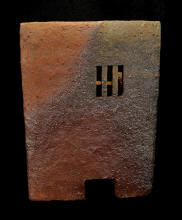 |
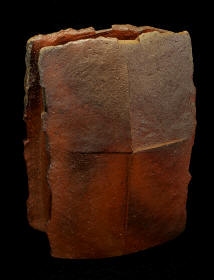 |
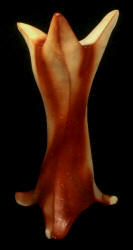 |
|
Hiroyuki Wakimoto wood-fired vase/sculpture No.6 10.5"h x 8" x 3" Sold See Show |
Hiroyuki Wakimoto wood-fired vase/sculpture No.12 14"h x 9.5" x 7" Sold See Show |
Joji
Yamashita Dancer No.1 13"h x 5.5" x 5.5" |
|
Tanba* Pottery |
||
|
Nestled in a beautiful valley between
Shitodani and Muko rivers below the Kokuzou mountain in Hyogo
prefecture west of Kyoto is the village Tachikui, the ancient
pottery center of Tanba. Historic earth-tone Tanba wares were
originally designed for storage and daily use, and had an
unpretentious grace. Today, the areas around this rather remote
locale are homes of many potters who continue to make excellent
traditional Tanba wares as well as contemporary designs. * Japanese names have meanings. The Japanese characters Tan (丹) and Ba (波) mean 'red waves'. Tanba (Land of Red Waves) was named after a type of red rice grown in ancient time which turned the area into a sea of red around harvest times. The name is often translated as Tamba, corrupting both its pronunciation and meaning. |
||
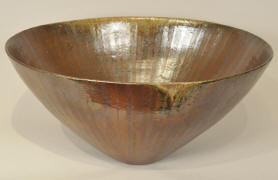 |
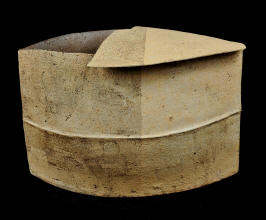 |
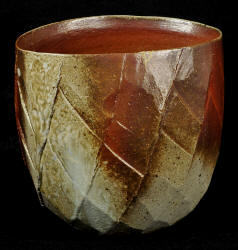 |
|
Kiyoharu Ichino wood-fired Akadobe bowl N0.15 18" x 14" x 8.5"h Sold See Show |
Keiichi Shimizu vase No.6 12" x 6.5" x 8.5"h Sold See Show |
Tadashi Nishihata large akadobe-yu bowl No.21 14" x 12" x13"h Sold See show |
|
Shigaraki & Iga Pottery |
||
|
Shigaraki, an old pottery center in the mountains, produces an excellent
clay with relatively low iron content. Shigaraki pottery is
traditionally fired without glaze in wood-fueled kilns. At one time,
this area produced some of the most beautiful and revered ceramics in
Japan. Today, the town is flooded with mass-produced utility grade
pieces and ceramic reproductions of a raccoon-like creature called
Tanuki, popular as a decoration in many Japanese shops. Good pieces by
contemporary potters who continue the great Shigaraki tradition are much
sought after. Located south of Shigaraki, Iga is another old pottery center with a pottery tradition dating back at least 1,200 years. During the Momoyama period (1573-1600), Iga was synonymous with some of the most revered tea ceremony ware in Japan. Today, there are fewer than several dozen active potters in Iga. One of the most notable contemporary Iga ceramists is Yoshitaka Hasu, who is taking the ancient tradition to new levels. |
||
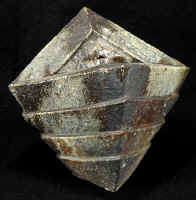 |
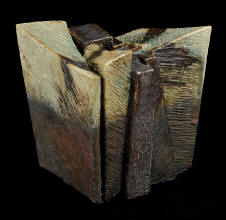 |
 |
|
Yoshitaka Hasu wood-fired vase No.1 11.5" x 10" x 9.5"h Sold See Show |
Yoshitaka Hasu wood-fired vase No.11 9" x 8" x 10.5"h Sold See Show |
Yoshitaka Hasu wood-fired vase No.18 8" x 8" x 9"h See Show |
Echizen Pottery |
||
| The picturesque areas in Fukui prefecture overlooking the Japan Sea produce another distinctive warm-tone ceramic style known as Echizen. One can find remnants of ancient noborigama (climbing kilns) and pottery shards hundreds of years old littering the countryside here. Echizen ceramics are typically fired at high temperature to a deep shade of brown, with distinctive and often intense fire markings that contrast with their overall subdued colors. A number of highly innovative potters work in this area. | ||
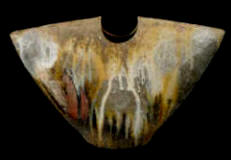 |
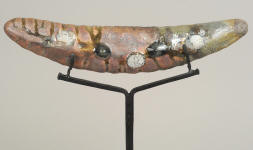 |
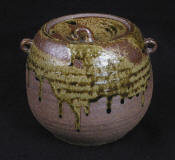 |
|
Reiko Kakiuchi-Cohen wood-fired vase No.11 Sold See Show |
Reiko Kakiuchi-Cohen wood-fired vase No.39 w/ iron stand Sold See Show |
Shichizaemon Kitano wood-fired mizusashi w/ wooden box Sold 6" x 6" x 6" |
Seto Pottery |
||
| Among the old historic pottery centers, Seto is the only one that made glazed ceramics since the Heian Period. Seven types of glaze have been developed (Kiseto, Koseto, Shino, Oribe, Kaiyu, Tetsuyu, and Ofuke), each with its own distinct aesthetics. For example, Kiseto (yellow Seto) is famous for its delicate greenish yellow finish that accentuates the typically thin-walled ceramics. Oribe is characterized by intricate colorful geometric patterns, whereas Shino wares are tastefully decorated with simple drawings reminiscent of haiga (Zen paintings that accompany haiku). The areas around Seto are homes of numerous artists, who produce a rich variety of both traditional and contemporary works. | ||
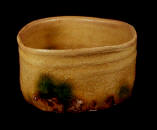 |
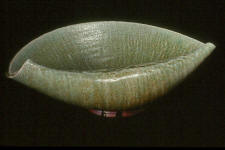 |
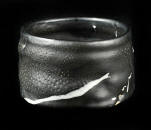 |
|
Shukai Kagami Kiseto tea bowl 3.25"H x 5" x 4.5" Sold See Show |
Moriyuki Ando Bowl w/ haiyu kairagi glaze 20.5" x 13" x 7"h Sold |
Tadashi Mori Black Oribe tea bowl #9 4.5" x 4.5" x 3.5"h See Show |
Contemporary Japanese Pottery |
||
|
The extraordinary depth and history of Japanese pottery inspire contemporary artists whose aim is not only to continue the heritage, but to take it beyond in pursuit of their artistic visions. Their best works have evolved beyond traditions and are conceptually sophisticated and driven by ideas. Touching Stone Gallery is privileged to showcase outstanding examples of these contemporary works. |
||
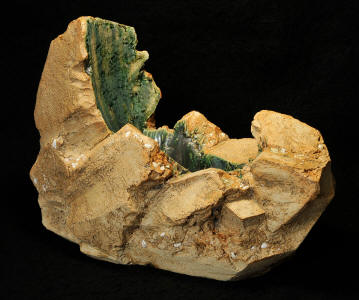 Fusako Akao Memory of Time F4 Ceramic sculpture 16.5" x 8" x 12"h Sold |
||
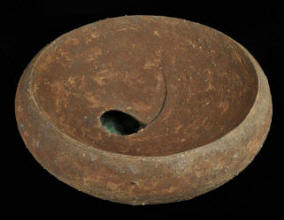 |
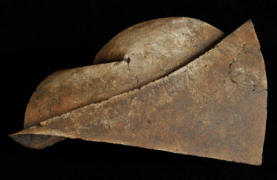 |
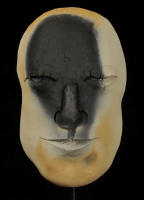 |
|
Tadashi Ito Quintessence Bowl No.6 ceramic sculpture 15" x 13.5" x 5.5"h Sold See Show |
Yukiya Izumita Weathered Beauty No.6 ceramic sculpture 15" x 10" x 5.5"h Sold See show |
Ryo Mikami Mask No.17 (Deliberate) Pit-fired ceramic 8.5" x 5" Sold |
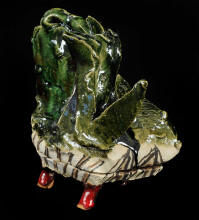 |
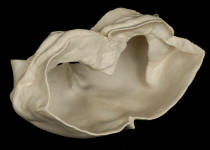 |
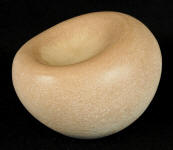 |
|
Tadashi
Mori
|
Hiromi Okumura 12" x 8" x 7"h Sold
|
Yoko
Terai
|
Photography and web design by Touching Stone Images. All texts and images protected by US and international copyright laws.
Copyright © Touching Stone. All Rights Reserved.